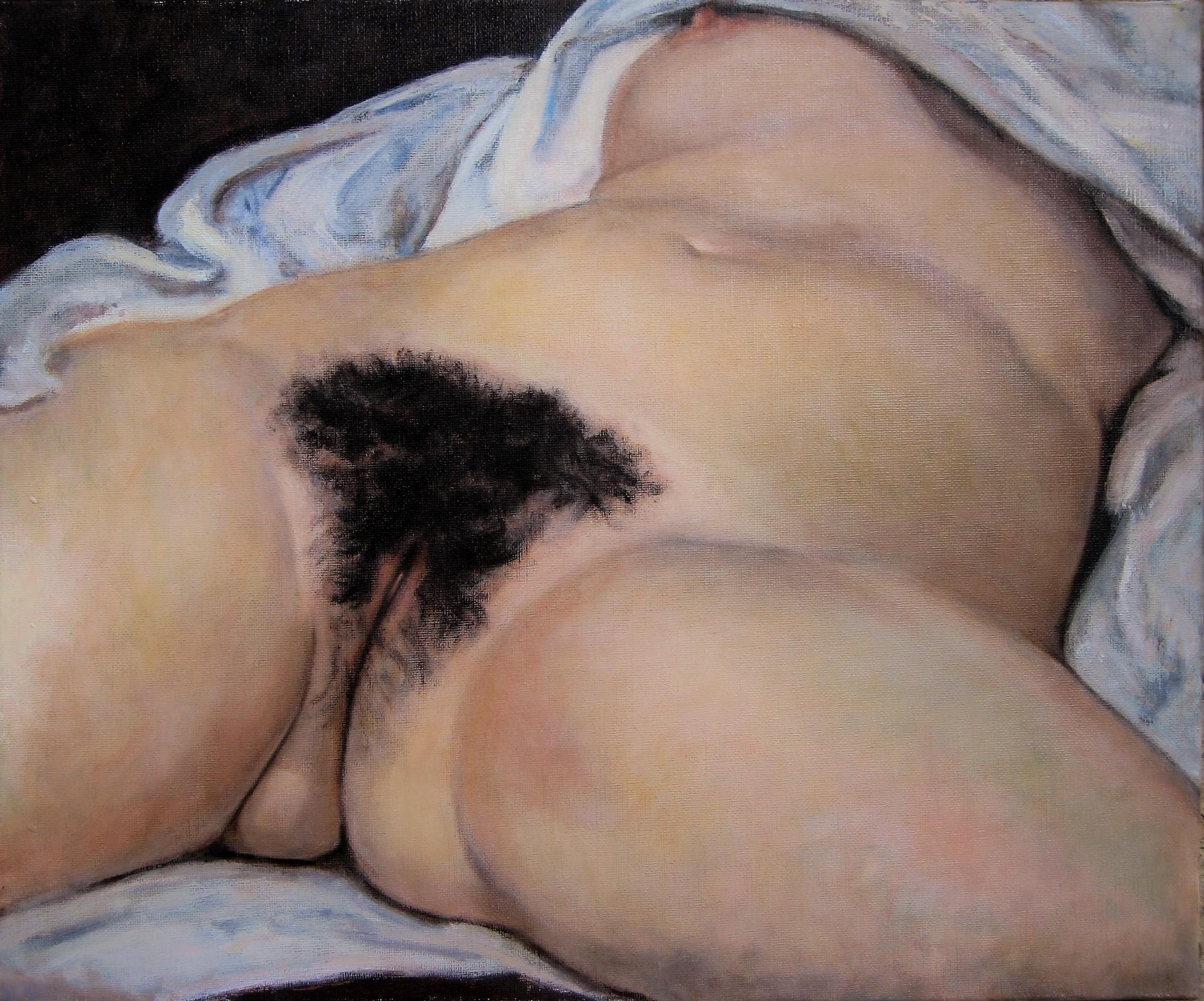But not before the head of the copyist department warned Milgrom: this wouldn’t be easy.
“It did shock a lot of people that a woman was copying this particular painting,” says Milgrom. “A male copyist would not have caused quite as much perplexity as encountering me painting it.” The painting is often considered a case study for the male gaze—seeing a woman paint it adds a different dimension, one of reclaiming agency over a woman’s body.
Milgrom soon spent the rest of her stay in Paris reproducing the artwork, after getting over an initial hurdle of embarrassment. “A handful of visitors gave me strange looks as I parked my easel in front of the cordon that protected L’Origine,” she writes of her first day. “Looking at a painting like L’Origine on one’s own is one thing, but having others watch you looking is awkward, to say the least.”
But the familiar act of painting transported her to a different zone, one where she could focus on colors, angles, and brushwork and tune out the activity around her. Still, as one of the icons of the Musee d’Orsay, L’Origine du Monde (and Milgrom, by association) saw a steady stream of visitors from Japanese tourists to awkward middle-aged American couples.
Some passersby gave her an encouraging thumbs up. Others were less impressed. “I did have my critics,” she remembers. And a few misconstrued the painting’s subject as an invitation to ask its copyist out on a date. “Some men saw me as the living embodiment of L’Origine by proxy,” she explains.


























